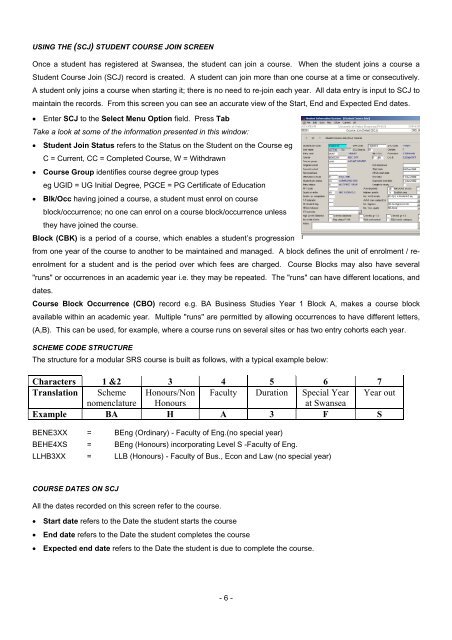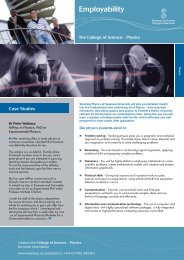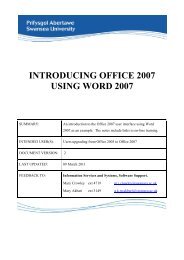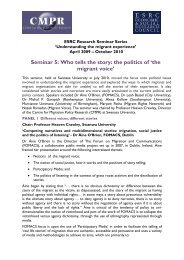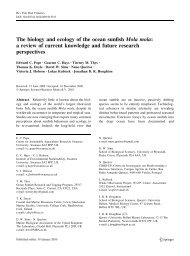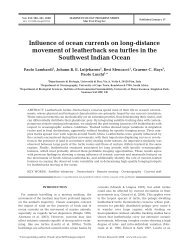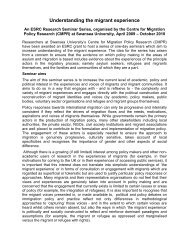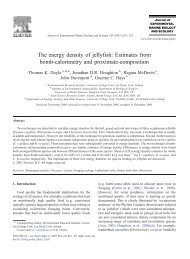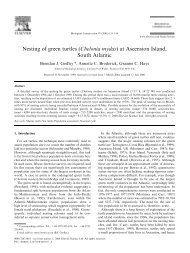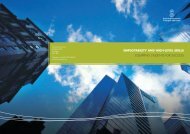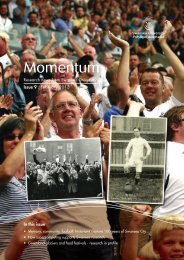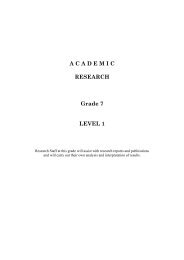student record system sits:version 8.2.1 guide - Swansea University
student record system sits:version 8.2.1 guide - Swansea University
student record system sits:version 8.2.1 guide - Swansea University
You also want an ePaper? Increase the reach of your titles
YUMPU automatically turns print PDFs into web optimized ePapers that Google loves.
USING THE (SCJ) STUDENT COURSE JOIN SCREEN<br />
Once a <strong>student</strong> has registered at <strong>Swansea</strong>, the <strong>student</strong> can join a course. When the <strong>student</strong> joins a course a<br />
Student Course Join (SCJ) <strong>record</strong> is created. A <strong>student</strong> can join more than one course at a time or consecutively.<br />
A <strong>student</strong> only joins a course when starting it; there is no need to re-join each year. All data entry is input to SCJ to<br />
maintain the <strong>record</strong>s. From this screen you can see an accurate view of the Start, End and Expected End dates.<br />
• Enter SCJ to the Select Menu Option field. Press Tab<br />
Take a look at some of the information presented in this window:<br />
• Student Join Status refers to the Status on the Student on the Course eg<br />
C = Current, CC = Completed Course, W = Withdrawn<br />
• Course Group identifies course degree group types<br />
eg UGID = UG Initial Degree, PGCE = PG Certificate of Education<br />
• Blk/Occ having joined a course, a <strong>student</strong> must enrol on course<br />
block/occurrence; no one can enrol on a course block/occurrence unless<br />
they have joined the course.<br />
Block (CBK) is a period of a course, which enables a <strong>student</strong>’s progression<br />
from one year of the course to another to be maintained and managed. A block defines the unit of enrolment / reenrolment<br />
for a <strong>student</strong> and is the period over which fees are charged. Course Blocks may also have several<br />
"runs" or occurrences in an academic year i.e. they may be repeated. The "runs" can have different locations, and<br />
dates.<br />
Course Block Occurrence (CBO) <strong>record</strong> e.g. BA Business Studies Year 1 Block A, makes a course block<br />
available within an academic year. Multiple "runs" are permitted by allowing occurrences to have different letters,<br />
(A,B). This can be used, for example, where a course runs on several sites or has two entry cohorts each year.<br />
SCHEME CODE STRUCTURE<br />
The structure for a modular SRS course is built as follows, with a typical example below:<br />
Characters 1 &2 3 4 5 6 7<br />
Translation Scheme Honours/Non Faculty Duration Special Year Year out<br />
nomenclature Honours<br />
at <strong>Swansea</strong><br />
Example BA H A 3 F S<br />
BENE3XX = BEng (Ordinary) - Faculty of Eng.(no special year)<br />
BEHE4XS = BEng (Honours) incorporating Level S -Faculty of Eng.<br />
LLHB3XX = LLB (Honours) - Faculty of Bus., Econ and Law (no special year)<br />
COURSE DATES ON SCJ<br />
All the dates <strong>record</strong>ed on this screen refer to the course.<br />
• Start date refers to the Date the <strong>student</strong> starts the course<br />
• End date refers to the Date the <strong>student</strong> completes the course<br />
• Expected end date refers to the Date the <strong>student</strong> is due to complete the course.<br />
- 6 -


